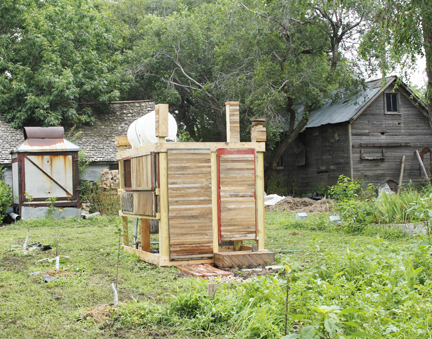Around Marquette, NE (pop.215) you can find fields of corn and soybeans that stretch seemingly forever, punctuated at mile increments by straight roads named things like L or 24.
You can also find progressive ranchers who blocked the Keystone pipeline by raising environmental awareness, a 75 year old organic farm, a landscape visionary who has been re seeding the prairies by hand, and a Victorian home perched on concrete blocks that is home to artists from all over the world each April-November.
The tiny town is an oasis of eccentric thinkers and visionaries nestled in the midst of social and spatial monocultures.
In the Al Hajar Mountains, at the eastern edge of the Arabian Desert, rain comes rarely, and when it does, in floods. When the clouds burst, rain skitters from the slopes like oil from a griddle, gathers into rivulets and swiftly moving sheets, and tumbles into the ditches. Ancient desert dwellers built networks of aqueducts and underground tunnels to funnel the water to their crops. Oases of mango, date palm, sweet lemon, and lime still persist on this system. On most adjacent slopes, however, the only traces of green are a few thorny locust trees, whose roots can descend more than a hundred feet in search of groundwater.
These oases, whether walled off from the surrounding sands or fields, are fed by real and metaphoric streams with whatever can be collected—whether in cisterns or in suggestions, complimented by colors, patterns and visions of earthly bounty on tiles or, the ultimate portable paradise, woven carpets.
The scales seem at odds with one another—the small dissonant practices facing dominant mode and the mega scale. Oasis establishes a place to let alternates take hold– re seeding the prairies, providing culture, food, fuel, shade, and shelter. This Oasis proposes that we can fertilize the soil and the soul, and cool the atmosphere in more ways than one. Big change starts with the smallest steps, and building out this oasis, starts with a place to cool down on a hot day.

